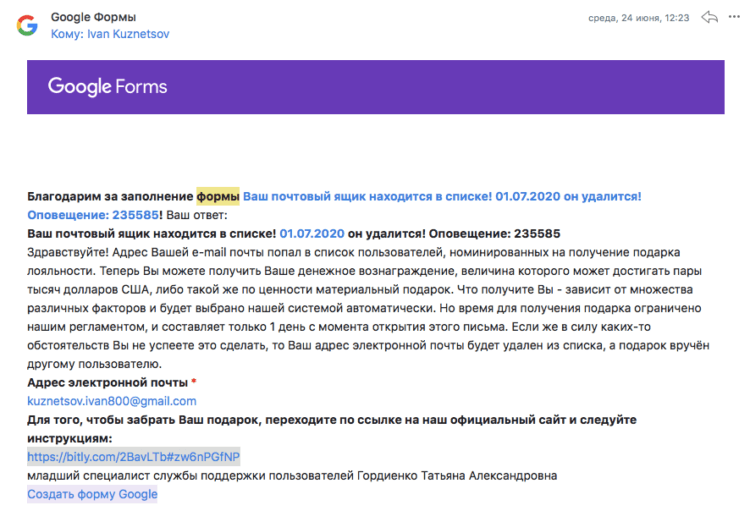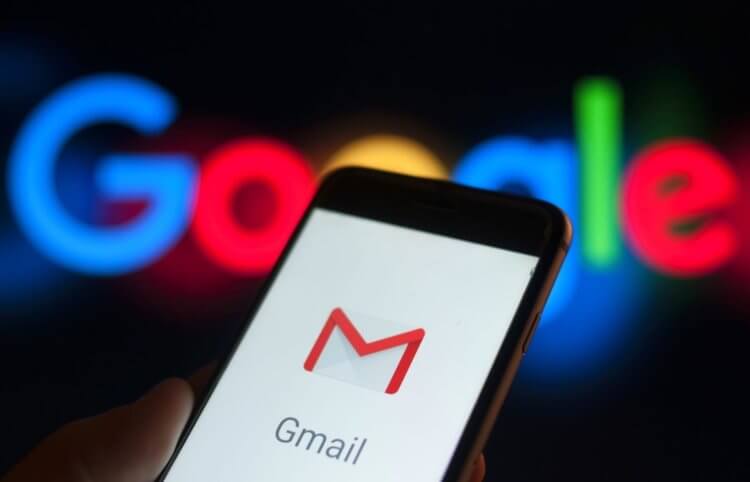I think you have already noticed that in the past few years, the number of spam that clogs email has decreased significantly. Affected by the efficient operation of the algorithms of mail services, which determine the addresses involved in mailing lists, analyze their contents and block them even before they even send anything. Nevertheless, from time to time such letters still slip through, and due to the fact that many users are completely unaccustomed to spam mailings, they are led to their contents and expose themselves and their data to danger. You don't have to go far for examples.

Received an email warning about deleting your account? Don't get fooled
A few days ago, I received a message in the mail supposedly from Google, which said something like this: 'Your mailbox is on the list! On 07/01/2020 it will be deleted! '. Despite the fact that usually nothing like this reaches me, I am good at detecting fraudulent emails. Usually it is enough to look closely at the address from which the message was sent. It is almost certain that the domain name will use additional words or characters, while generally resembling the original Google mailing address.
How to understand spam

Sometimes email spam looks very believable
To my surprise, the address really belonged to Google, and it even made me think for a second: is it really true? But common sense prevailed, and I decided to reread the letter more carefully, reading every word and placing mental accents in my head. The understanding of what was happening came almost immediately. I drew attention to what I didn’t notice in a hurry when I first received the letter – firstly, to the 'Google Forms' logo through which the message was sent, and secondly, to the link that was wrapped in bitly, and, thirdly, the offer to receive some kind of gift.
That is, the sender did everything to confuse me and, generally speaking, he succeeded. Because the 'Google Forms' logo and URL worked just right. I actually assumed that the sender of the message was Google and at first did not even pay attention to the contents of the letter, other than the deletion notification. It is logical that the company itself would not contact me in this way. Therefore, I let the rest of the verification steps take their course – for my own reassurance and in order to tell you about everything. To begin with, I 'expanded' the link and realized that it did not lead to the Google site at all, and then I took it and followed it to see what would happen.
Spam in Gmail

Protecting your account is easier than it sounds
Fortunately for me, it turned out that this was an ordinary, albeit very confused, advertisement for the Sportloto lottery, in which I was invited to participate. Not that I was very disappointed, but still I expected to see a phishing page where they would ask me to enter the login and password from my Google account in order to 'steal' it from me. Of course, I would not have done any of this, as well as registering in the lottery, but the fact remains that what I encountered was real spam, which I managed to hide behind the logo of the Google service.
How to protect your account from hacking
- If you receive messages with text like the one they were trying to scare me with, don't believe it: Google never sends such messages;
- Never open links from suspicious emails, because even a banal link can trigger the download of a malicious file;
- If you receive an email with a link wrapped in bitly, google the service that allows you to expand the link and see where it goes;
- Do not enter your data (especially your login and password) on third-party sites that allegedly offer you to cancel the deletion of your account.
These tips may seem too obvious to follow. However, neglecting them can turn into serious problems for you. After all, if someone succeeds in gaining access to your Google account, there is a high probability that this someone will be able to gain control over other services that you use. Not to mention that this will allow an attacker to read your correspondence, view scheduled events, and possibly even contact someone on your behalf.
